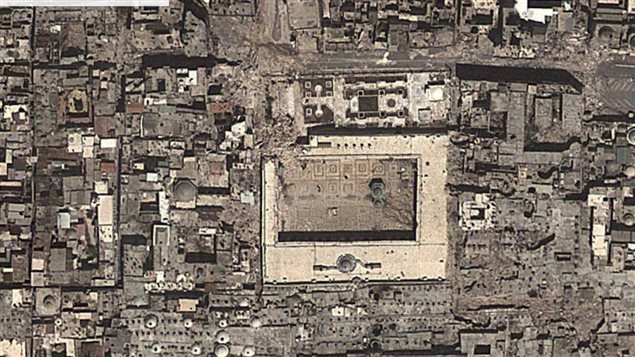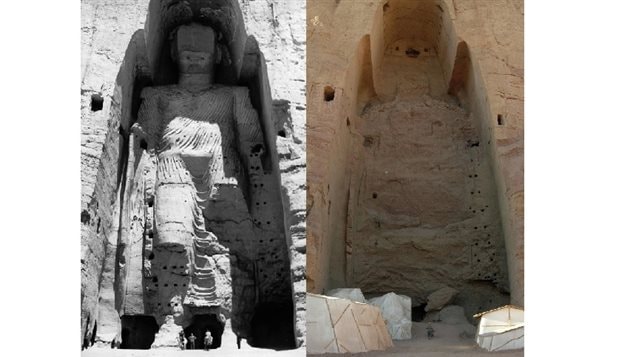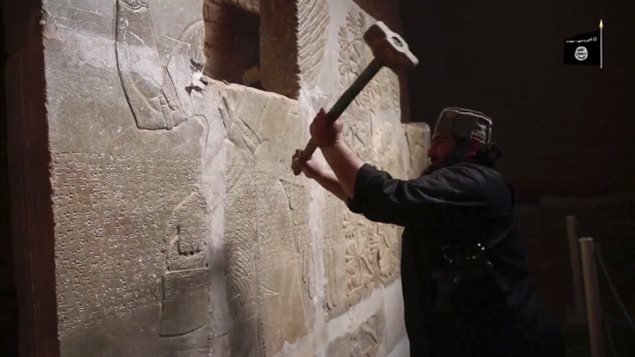Wanton and ongoing destruction of world heritage
Artefacts that have survived thousands of years of history have now succumbed to ISIS machine guns, sledgehammers, and bulldozers.
ISIS’ destruction of ancient relics, including entire sites, has raised alarm among historians, museum curators, archaeologists and concerned citizens around the entire world. Another recent video has heightened that concern and a sense of urgency to stop these acts.
The wanton destruction is also re-igniting an age old debate about returning historic art, artefacts and other antiquities to their country of origin.
James Cuno, an American art historian and curator, is an outspoken critic of repatriation. He believes that important artifacts should be considered the property of all humanity and shared across the globe.
Currently serving as president of the J. Paul Getty Trust, which runs the Getty Museum and Getty Centre in California, he is quoted in CBC news saying, “It doesn’t matter to me where they’re preserved if they’re preserved for the world. Calamity can happen anywhere but it’s not likely to happen everywhere simultaneously. So the more you distribute the risk the more likelihood there is that things will survive the calamity that necessarily will happen at some point.”


Reported in the International Business times, Mosul’s public library director Ghanim al-Ta’an is said to have told The Fiscal Times that ISIS members burned the city public library which housed more than 8,000 rare old books and manuscripts.
Info on historic sites
Lisa Cooper, associate professor at the University of British Columbia’s Department of Classical, Near Eastern and Religious Studies, and colleague Lynn Welton, a post-doctoral fellow, have together worked for several decades in Iraq, Syria and Turkey as archaeologists.
In a UBC internal news story Professor Cooper said, “In terms of the destruction of cultural heritage, I would start with the events that took place recently. This included the willful destruction of objects at the Mosul Museum – including antiquities from sites such as Nineveh, Nimrud and Hatra – as well as the demolition of an Assyrian winged bull sculpture at Nineveh.
These sites flourished in the early periods of Mesopotamia, one of the world’s cradles of civilization. Its societies and cultures are important testimonies to human ingenuity, creativity and endeavor. They’re a part of our shared past and cultural heritage. Their destruction is a loss for all of us, and a huge loss for the local Iraqi communities.”
Lynn Walton added, “Although the most recent destructions have received the most publicity, this has been ongoing for many months. What we’ve heard about recently is just the culmination of a larger process. I think it’s going to be a long time before we really understand the full extent of the damage.
Shocked and dismayed at the destruction, a group of professors at the University of Oxford have begun a project to map endangered archaeological sites.
ISIS video- youtube
In the video the man is saying in reference to the ancient civilizations that lived in Mesopotamia for 5,000 years, now Iraq, Syria,and southern Turkey
“These ruins that are behind me, they are idols and statues that people in the past used to worship instead of Allah. The so-called Assyrians and Akkadians and others looked to gods for war, agriculture and rain to whom they offered sacrifices,”
“The Prophet Mohammed took down idols with his bare hands when he went into Mecca. We were ordered by our prophet to take down idols and destroy them, and the companions of the prophet did this after this time, when they conquered countries.When God orders us to remove and destroy them, it becomes easy for us and we don’t care even if they cost millions of dollars.”
Although not on this scale, destruction of antiquities by Islamist extremists also occurred in Afghanistan when they destroyed the world famous Bamiyan Buddhas carved out of the cliff face in 507 and 554 AD








For reasons beyond our control, and for an undetermined period of time, our comment section is now closed. However, our social networks remain open to your contributions.